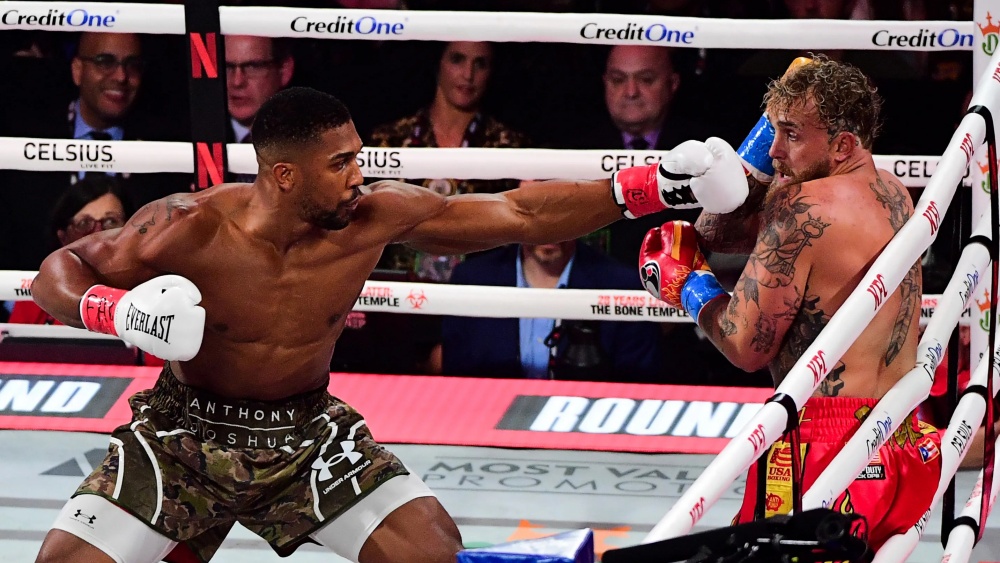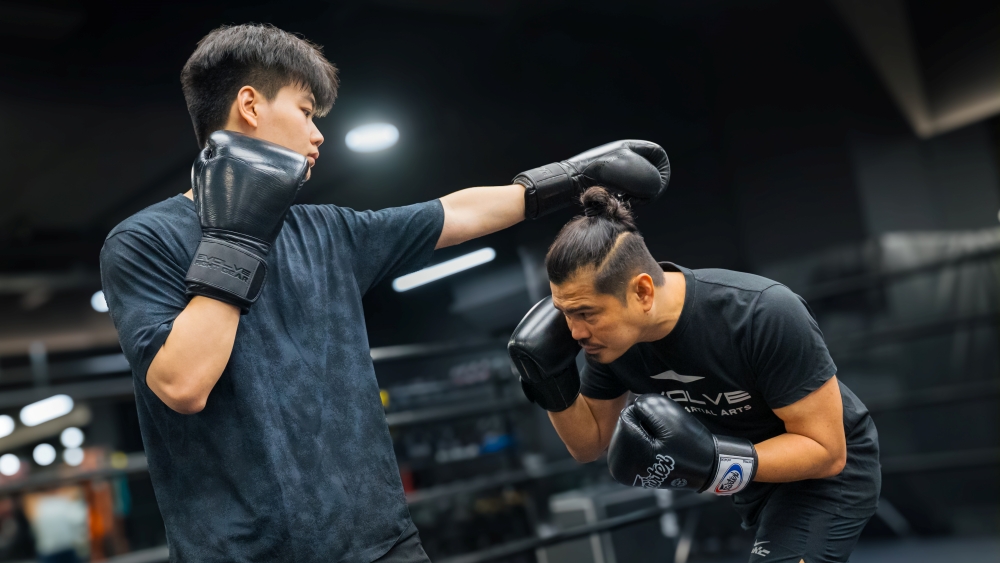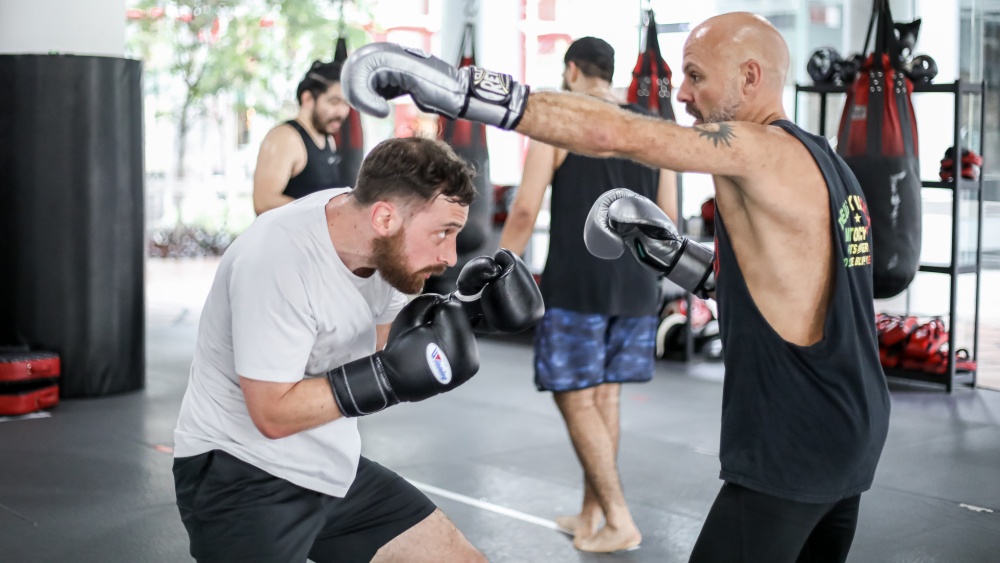The most effective self-defense techniques and strategies are equally effective for women and men. Learning a martial art goes a long way when it comes to self-defense since the average trained person would likely defeat the average untrained person in hand-to-hand combat.
However, learning a martial art doesn’t make you invincible. It only teaches you techniques that will be effective on most potential attackers and gives you valuable fighting experience. The latter is often the most underrated aspect of learning a martial art.
For example, Brazilian Jiu-Jitsu is regarded by many in the security industry as the most effective martial art for self-defense, and a lot of that comes from how well they perform in real-life situations and mixed martial arts (the closest sport to real fighting).
One distinct aspect of BJJ is the rolling (sparring) culture. Many instructors expect their students to roll after each class. You might get a pass during your first few weeks of training, but your instructors will eventually want you to roll with your training partners. You’ll probably even get to roll with your instructors from time to time.
Since BJJ doesn’t allow for the use of any strikes, students can roll at close to 100 percent without worrying about taking any damage. As a result, BJJ students are used to executing their techniques against resisting opponents who also know BJJ. This creates a grappler most untrained people don’t stand a chance against.
Many grappling-based martial arts like Judo, Wrestling, and Sambo tend to have similar cultures. Consider training at least one grappling-based martial art to learn useful tools that might come in handy in self-defense situations.
However, fights often start with both people standing, so contemplate at least taking a few classes of a striking-based martial art like Muay Thai, Sanda, or Boxing. It never hurts to know how to throw a proper punch or how to evade one in a self-defense situation.
Of course, self-defense is a lot more than knowing how to fight. For starters, you most likely will never be the best fighter on the planet, and there will always be people who can physically overpower you.
There’s also the issue of weapons in a self-defense situation. Martial arts like Krav Maga can teach you techniques that help against weapons, but these techniques are often very scenario-specific and are not guaranteed to work.
13 Self-Defense Tips Everyone Should Know
Knowing how to fight is only half the equation for defending yourself and your loved ones. Your mentality is also a huge factor and often makes a more significant impact than knowing how to fight. Let us dive right into our list of self-defense tips:
1) Trust Your Instincts
We’ve all had that funny feeling in our guts when we knew something wasn’t right before something terrible happened. That’s your instinct, and you can thank 60,000 years of evolution for that. That little voice has kept humans safe for millennia, and it can do the same for you. It might be somewhere you don’t want to go or someone giving you the creeps.
There’s always a reason why you have a bad feeling about something, even if it isn’t apparent to you. That little voice might be your best self-defense tool since it prevents the self-defense scenario from developing in the first place.
2) Employ Target Denial
Never allow yourself to be an easy target for someone with bad intentions towards you. The outcome of a fight is often determined before the first strike is thrown. Always take the opportunity to get away from potential threats before things turn sour.
For example, if a person walking toward you on a dimly lit street at night gives you the creeps, cross the street so you don’t have to cross paths. If a person standing in an elevator gives you a bad vibe and there’s no one else around, wait for the next elevator.
These little things remove you from potential threats by denying the would-be attacker from getting a chance to victimize you. Making moves to avoid conflict doesn’t make you cowardly; it simply makes you intelligent.
“The wise warrior avoids the battle.” Sun Tzu
3) Radiate Confidence
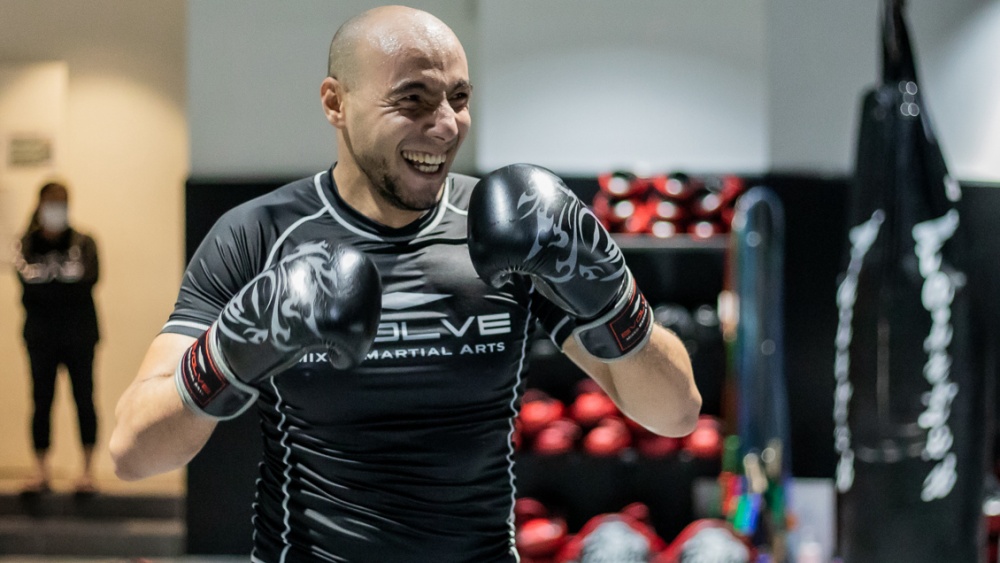
Confidence is one of the biggest weapons you have against potential threats since victimizers and bullies tend to look for the path of least resistance. It’s the same way predatory animals like lions typically target the weakest prey in the herd.
People who appear distracted, scared, or confused are more likely to be selected as targets by predators. Criminals love to victimize those who are not paying attention to their surroundings since they’re more likely to be able to catch them off guard. Remember, predators never want to be engaged in a fair fight. They want to victimize you without having to deal with any consequences.
Confidence is like an invisible shield that deters those looking to make you a victim. Martial arts training can do wonders for your confidence since you learn self-defense techniques that are effective in real-life situations. You get to practice them on your training partners, making you confident in your abilities to defend yourself.
The more confident you are, the less likely others will try to victimize you. The less vulnerable you appear, the less likely you’ll ever have to use your self-defense moves. For example, who is more likely to get their purse snatched in a crowded market: A granny or some muscle-bound bodybuilder? We all know the answer to that question.
Dedicate some time to working on yourself to increase your confidence. Improving your posture also helps since those with good posture often come across as confident. Walk tall, don’t slouch your shoulders, pay attention to your surroundings, and stick your chest out as you go about your daily routine. Anyone looking to victimize you will get the memo you’re not to be played with.
4) Set Verbal Boundaries
Strong verbal skills are another crucial self-defense skill. It’s one of the most important self-defense skills since you’re more likely to use them than any physical skill. Predators often engage their victims in conversation before striking. This is done to interview the victim to determine if they would be an easy target. An experienced criminal often tries their words to intimidate or freeze you with fear, reducing the odds of you fighting back.
While verbal confrontation can be terrifying if you’re not the aggressive type, it is vital to show the person “interviewing” you that they picked the wrong victim. Stay calm if a creepy person approaches you. Stand tall, and respond assertively and confidently. You’ll probably “fail” the interview by doing these things, forcing the potential attacker to look for an easier victim.
5) Maintain A Safe Distance
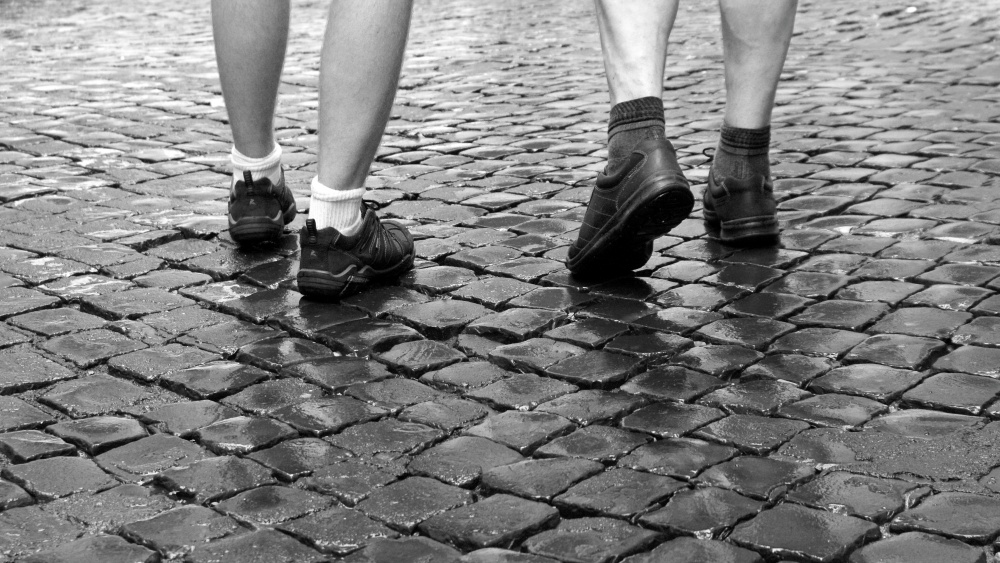
Always try to maintain at least an arms-length distance between a potential attacker and yourself. You’re going to need that space if you end up having to fight back. It takes about a quarter of a second to react to an attack, so never allow a potential threat to get too close to you.
Attackers often try to close the distance on their victims to gauge their willingness to fight back. If you fail that test, the attacker knows you are scared to engage, giving them a confidence boost. You can avoid that by using verbal boundaries to stop an aggressor from closing the distance on you. If that doesn’t work, you might have to physically stop them from crowding your space.
6) Use A Non-Confrontational Stance
Most victimizers operate off the notion that their victims won’t be able to defend themselves, so take advantage of that misconception by catching them off guard. You can do that by using a non-confrontational stance when a potential attacker approaches you.
Use a relaxed, confident stance with your shoulders and hips forward while your arms are up and open in front of you. This stance puts you in a position to defend against or launch attacks quickly, without making it obvious to the potential attacker that you can fight or escalate the situation.
7) Catch Your Attacker Off Guard
Most predators pick targets they think won’t be able to defend themselves, so take advantage of their mentality and use the element of surprise to your advantage. If a potential attacker is interviewing you, use your verbal skills to get them to drop their guard, leaving openings you can take advantage of if things get out of hand.
At times, simply fighting back is enough to deter an attacker. In some situations, like someone grabbing you from behind, that might be your only option. Fight hard enough, and you might make the attacker reconsider their decision.
8) Keep Things Simple
A self-defense situation isn’t the ideal time to try out your fancy techniques like spinning heel kicks. Adrenaline is automatically released in your body anytime you find yourself in dangerous situations; one of the effects is a loss of fine motor skills.
Ever watch a movie where some damsel in distress is trying to get away from some axe murderer, and she fumbles the keys to her safe haven at the door until the bad guy catches her? That’s adrenaline at work, and the same thing might happen to you in a self-defense situation.
Simple things like taking your hands out of your pocket, opening a lock with a key, or unlacing your fingers become much more challenging when adrenaline is pumping through your blood. It’s the worst time to attempt fancy techniques that require you to make multiple movements simultaneously.
Instead, keep things simple if you find yourself in self-defense scenarios. Some of the techniques you should add to your self-defense arsenal include:
- Heel-Palm Strike: A heel strike delivers as much impact as a closed fist, and you’re less likely to damage your hands. Even professional fighters often hurt their hands when they get into fights outside the ring.
- Eye Strikes: There are no rules in self-defense situations, so feel free to use techniques that are illegal in sports like mixed martial arts. MMA fighters often eye-poke their opponents without even trying, and fighters get up to five minutes to recover. An easy way to poke an attacker’s eyes is by using your lead hand to gauge distance and keeping your fingers extended while doing so.
- Inside Low Kick: Georges St-Pierre had one of the best inside low kicks during his reign, and the technique often reduced his opponent’s movement. Occasionally, inside low kicks go higher than their intended target (the inside part of the thigh), and land on the groin instead. Master the inside low kick (especially with your lead leg), and you’ll have a fast weapon you can target an attacker’s groin with.
- Rear Naked Choke: This is one of the easiest chokes used in BJJ and other combat sports, and it’s also one of the most effective. A rear-naked choke can bring down any attacker regardless of how big or strong they are. The technique is called the “lion killer” for a reason.
9) Don’t Panic If You Get Knocked Down
Most self-defense fights eventually end up on the ground, so don’t panic if your opponent drags or knocks you down. Most people are pretty clueless about ground fighting, so even a little wrestling, Judo, or BJJ makes you much more dangerous than the average person.
If you end up on the bottom, prevent your attacker from posturing up by holding on to them. Look to sweep to a more dominant position or get back on your feet. A self-defense situation isn’t the ideal time to look for submissions off your back, so avoid going for submissions on your back unless you’re confident you’ll secure it. Getting slammed on concrete as you work for submissions off your back can get you in a world of trouble.
10) Follow Through
You need to be 100 percent committed to defending yourself If you find yourself fighting off an attacker. At that point, the fight isn’t over until the threat to your safety is over. Fighting back and pausing gives your attacker a chance to recuperate and return for round two.
You won’t have the element of surprise for the second round since your opponent now knows you can fight, and their ego has been bruised. They are likely to fight dirty at this point or pull out a weapon. You can prevent all that by staying on the offensive until you’ve subdued them or have a chance to leave the space.
11) Prioritize Physical Fitness
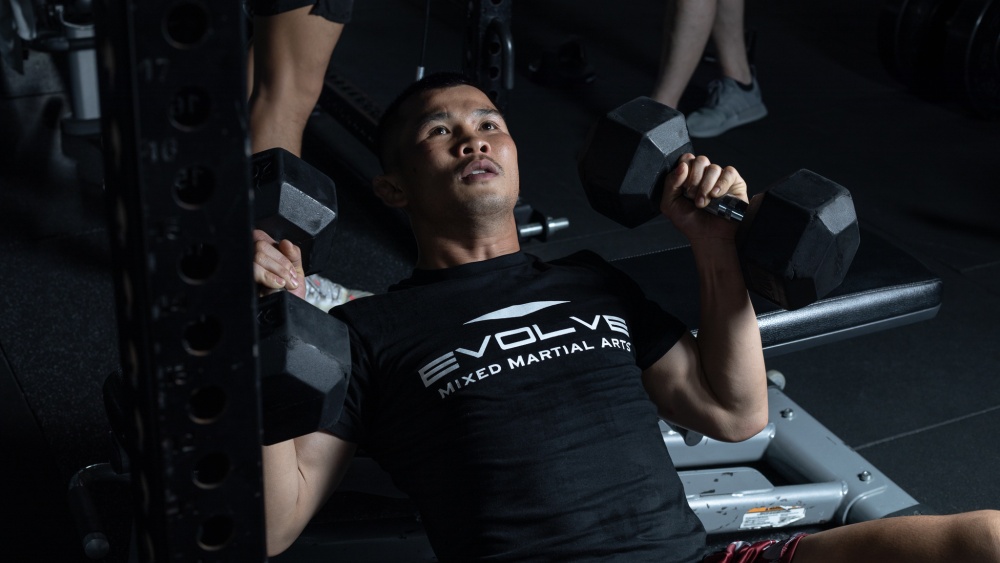
Being physically fit improves your odds of being able to defend yourself successfully, especially when you’ve also trained in martial arts. Being fit also reduces the odds of predators picking you since they typically go for victims who look weak and incapable of defending themselves.
Being in shape shows potential attackers you might be able to turn the tables around them, reducing the risk of them choosing you. If things end up getting physical, your strength and endurance might end up being the difference maker.
12) Use Common Sense
Common sense is your most effective weapon when it comes to defending yourself. Many self-defense situations can be avoided by analyzing your environment and making intelligent decisions. Don’t let your ego rope you into escalating situations instead of de-escalating them.
For example, someone you bump into at a festival might try to goad you into a fight. At that point, your options are: use your verbal judo to de-escalate the conflict or engage the person. Deescalating the confrontation means you don’t have to fight, and you get to walk away. Some bystanders might deem you a coward or punk for not reacting to harsh words thrown at you, but that’s their problem, not yours.
Engaging the person can lead to many scenarios like:
- You win the fight but get injured in the process.
- You lose the fight.
- You win or lose the fight, and law enforcement gets involved. You both end up going to jail.
- You win the fight and walk away unscathed.
- You win the fight but get jumped by the attacker’s buddies.
- You win the fight, but your attacker comes back with a weapon.
As you can see, most of these scenarios don’t work in your favor, so only engage a threat when your attempts to de-escalate have failed, and there is no other choice.
Every self-defense situation has many variables beyond your control, so the wisest attitude is to defuse any potential threats before things get out of hand. Only engage when you have no other option left to explore.
13) Stay Aware
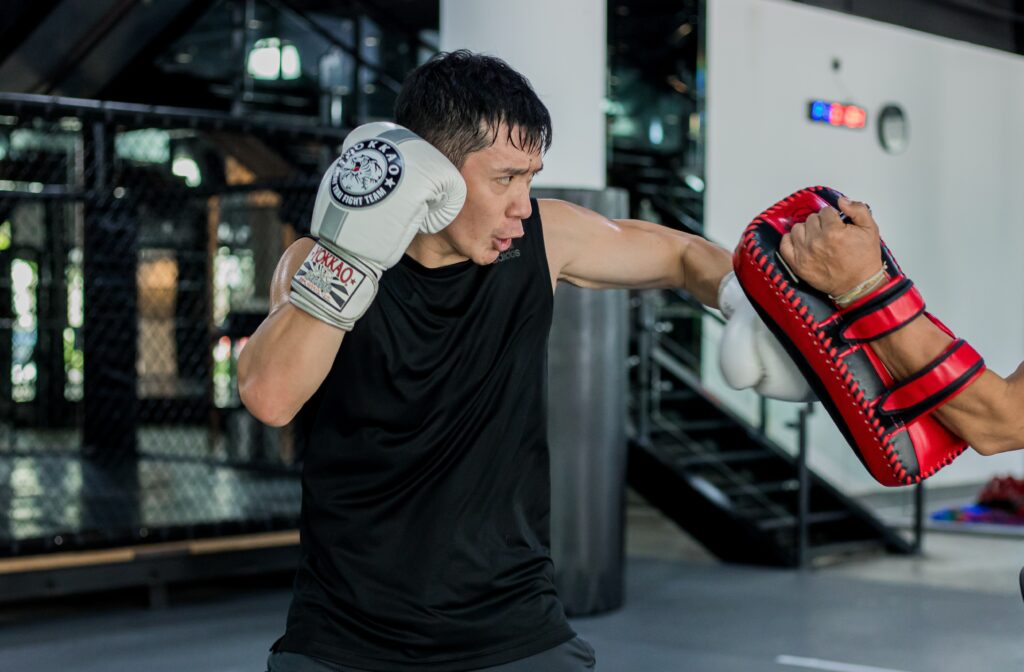
You won’t notice potential threats to your safety if your face is buried in your cell phone or you’re distracted by random thoughts. Make it a habit to pay attention to your surroundings, especially in transitional spaces. A transitional space is anywhere anyone can access, like a street or parking lot.
Predators often pick these places for their attacks, hoping that you’re not paying attention to your surroundings. The higher your awareness level, the more likely you’ll be able to implement the self-defense tips listed above.
If you are interested in learning martial arts for self-defense, consider a complimentary introductory class with us!
Book your complimentary trial class with our World Champions below!
If you have any other questions regarding Evolve MMA and the programs we offer, you can get in touch with our membership executives at the following locations:
Evolve MMA (Far East Square)
26 China Street
Far East Square #01-01
Singapore 049568
Phone: (65) 6536 4525
Evolve MMA (Orchard Central)
181 Orchard Road
#06-01 Orchard Central
Singapore 238896
Phone: (65) 6536 4556
Evolve MMA (KINEX)
11 Tanjong Katong Road
#02-52 KINEX
Singapore 437157
Phone: (65) 6288 2293
Evolve MMA (Clarke Quay Central)
6 Eu Tong Sen Street
#04-18 Clarke Quay Central
Singapore 059817
Phone: (65) 6226 2150
Evolve MMA (Star Vista)
1 Vista Exchange Green
#02-26A The Star Vista
Singapore 138617
Phone: (65) 6539 9590


